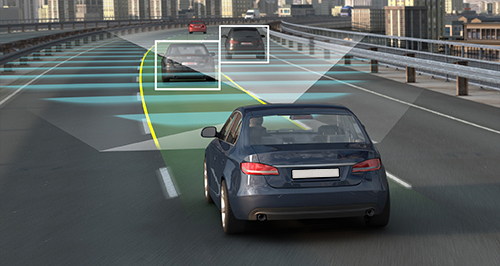News - General News - TechnologyAutomated cars to require expensive infrastructureCost query: The question of who will pay for the expensive infrastructure required for fully autonomous vehicles has been raised at the ITS Summit by Michigan University Transport Research Institute director Peter Sweatman. Driverless cars will change some of the basic concepts of motoring15 May 2015 By IAN PORTER THE arrival of automated vehicles could change some of the fundamental underpinnings of motoring, according to a leading researcher, who has also questioned who will pay for the infrastructure needed for autonomous vehicles to achieve their maximum potential. The Michigan University Transport Research Institute is currently running the world’s largest trial of vehicles fitted with intelligent transport system technology and is about to launch a major research program into how best to integrate ITS technology with automated vehicles. The institute is hoping to win approval from the United States department of transport for a third research project, a 20,000 connected-vehicle trial in south-east Michigan. A key target will be to define what infrastructure would be required when automated vehicles are introduced. While automated cars are designed to avoid bumping into each other, they would integrate better on the roads if they were assisted by being connected to external infrastructure. The question is how much infrastructure will be required and who will pay for it, said Australian-born director of the Michigan University Transport Research Institute Peter Sweatman, who was speaking at the Australian Intelligent Transport Systems Summit in Melbourne this week. “What we have to figure out is, when we go to large deployment in infrastructure, what is the right business model for getting the radio communications in the infrastructure?“The municipalities are not going to pay. So we have to find a way to make that work so it makes sense for companies to make that investment,” he said. “We know that the value proposition is there but it is not yet obvious as to how that all will be pulled together.” Dr Sweatman said automation of vehicles and introduction of intelligent transport systems (ITS) would bring savings for vehicle operators and for society. “There have been studies on the value streams coming from this kind of connectivity, whether it’s vehicle maintenance or various other aspects. “There are certain savings and monetary benefits involved and this is of the order of several hundred dollars a year (per vehicle). “We think, in total, there is enough value there but we need to figure out how that can be captured.” One way would be for the transport sector to share the 5.9gH frequency that ITS services require with other industries that can use the frequency to make money. “Obviously, that kind of wireless infrastructure can be used not only for safety and traffic movement, but for lots of commercial purposes, whether it’s fleet management or even downloading movies. “The 5.9gH frequency might have to be shared. It’s worth a lot of money.” Automated vehicles might also start to change the strict responsibility the driver bears when in a car. “We feel there will be a shift in liability,” he said. “It is absolutely clear now that the driver is always responsible. We think there is going to be a shift towards the manufacturer, that the the liability side will evolve.”“The insurance industry has already gone to what they call UBI – usage based insurance – and we are going to see more and more differentiated insurance offerings. “They are already pretty technologically switched on. They have a glut of data already. “One of things about this is there is going to be a new level of data available. We already know that wherever a manufacturer is deploying some form of automation, like traffic jam assist, a low-speed automation, or parking automation, we know that those offerings are always accompanied by the collection of data by the manufacturer. “The manufacturer wants to know how this tech is behaving and wants to keep an eye on things.”  Read more15th of May 2015  US trial to test how ITS and automation combineAutonomous transportation system could be operating in Michigan early next decade11th of May 2015  Stage almost set for communicating carsMinor legal changes needed for car-to-car tech and driverless vehicles in Oz5th of May 2014  Technology promises transport upheavalSmart roads, autonomous cars, tech-savvy passengers will change personal mobility19th of September 2013  Fight to save V2X radio for road safety‘Huge’ road safety breakthrough threat as US considers radio spectrum auction |
Click to shareGeneral News articlesResearch General News Motor industry news |
















Facebook Twitter Instagram